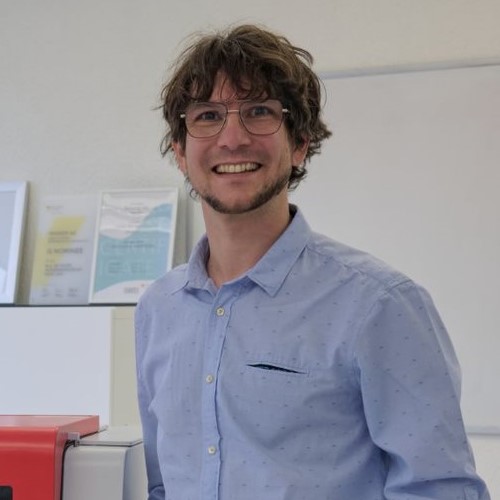About This Webinar
Since first demonstrated in 2014, the technique of quantum cascade laser (QCL) dual-comb spectroscopy has developed into a beneficial tool for a variety of mid-infrared applications. By steadily improving the technology of dual-frequency-comb QCLs, researchers have been able to access the enormous potential of this technique. QCL dual-comb spectroscopy began with highly time-resolved (250 µs to 250 ms) single-shot measurements and has progressed to time scales that can compete with rapid-scan Fourier-transform infrared spectroscopy (from 1 ms to minutes). Recent research has discovered a high-spectral resolution feature within this technique that allows measurements with less than 1 MHz resolution over a bandwidth of 50 cm
-1. This breakthrough was achieved by combining the high time-resolved mode with the highspectrally resolved mode in supersonic beam measurements.
Andreas Hugi explains the technical background of these acquisition modes and links them to real-world applications. These applications include protein and peptide dynamics, combustion diagnostics, stopped-flow technology and microfluidics, heterogeneous catalysis, vibrational circular dichroism, and high-resolution spectroscopy. These are exciting times for users of the dual-comb technique, as research has barely started to unlock its potential.
Who should attend:
Engineers, designers, and R&D scientists who are interested in utilizing QCL dual-comb spectroscopy. Those who want to further their knowledge on fast, high-resolution spectrometers, who work in fields such as test & measurement, medicine, optics, and imaging.
About the presenter:
 Andreas Hugi, Ph.D., is the co-founder of IRsweep. He received his doctorate in single-mode and comb operation of broadband QCLs in 2013 under the supervision of Jérôme Faist. At that time, he was heading the development of external-cavity QCL development. After successfully demonstrating the first room-temperature QCL frequency comb in 2012, his research pivoted accordingly. At IRsweep, he is managing director and chairman of the board. In these roles, Hugi has continued to be a key player in the development of QCL frequency combs. His mission is to bring the technology to the market and conquer real-world applications. Hugi, among others, was awarded the ETH Medal for an outstanding doctoral thesis and the Omega student award for his master's thesis.
Andreas Hugi, Ph.D., is the co-founder of IRsweep. He received his doctorate in single-mode and comb operation of broadband QCLs in 2013 under the supervision of Jérôme Faist. At that time, he was heading the development of external-cavity QCL development. After successfully demonstrating the first room-temperature QCL frequency comb in 2012, his research pivoted accordingly. At IRsweep, he is managing director and chairman of the board. In these roles, Hugi has continued to be a key player in the development of QCL frequency combs. His mission is to bring the technology to the market and conquer real-world applications. Hugi, among others, was awarded the ETH Medal for an outstanding doctoral thesis and the Omega student award for his master's thesis.
About the sponsor:
Hamamatsu Corp. is the North American subsidiary of Hamamatsu Photonics K.K. (Japan), a leading manufacturer of devices for the generation and measurement of infrared, visible, and ultraviolet light. Hamamatsu recognizes the vast potential dual-comb spectroscopy presents for a myriad of applications and stands poised to aid those in developing new technologies. Mid-infrared sources and detectors have made leaps and bounds in performance and integration over the past few years, and Hamamatsu is committed to more progress. The parent company is dedicated to the advancement of photonics through extensive research.